.Sw*.
ltro
rot
oLA
\ii*t"
TALK.l^Bour
Two-Way Radio
User's
Guide
KEM-PK14190-67
EM1000 Series
For More lnlormation
F0r further information.
you
may call
Motorola
at
l-800-638-5'119
(U.S.
and
Canada),
or e-mail
us
at
giantintl@callcentetcom
or
visil
us
on
the Internet at ww.motorola.com.
lmportant Information on
Sale and
Elficient 0petation
nead fhis Intomation Belore Using Your fladio.
The information
provided
in this
docum€nt
supersedes the
gensral
safety intormation
in
user
guides published pri0rt0
December 1,2002.
Transmit and Rsceive Procedure
Your
tlvo-way
radio
contains
a transmitter and a receivel To control
your
exposure
and
ensure compliance
with the
general population/
uncontrolled envir0nment exposure limits, always adhere t0 the
following
procedure:
.
Transmit
no
more
than
50% of the time.
.
To receive calls, release the PTT button.
.
To
transmit
{talk},
press
the Push to
Talk
{PTT)
button.
Transmitting
500/0
of
the time,
or less, is
important because the radio
generates
measurable RF energy exposure only when transmitting
(in
terns
of measurinq standards compliance).
Exposure
lo
Radio
Freqrency Energy
Y0ur Motorola two-way
radio
complies
with
the
following
RF energy
exposure standards and
guidelines:
'
United States Federal Comm[nications Commission, Code
ot
Federal
Begulations;
47CFR
part
2 sub-part J.
.
American National Standards
Institute
{ANSI}/lnstitute
of
Electrical and Electronic Engineers
(IEEE)
C95.
1-1992.
.
Institute 0f Electrical
and
Electronics
Engineers
{IEEE}
C95.
1-1999 Edition.
.
lnternational Commission on Non-lonizinq Radiation Protection
0cNlRP)
r998.
.
Ministry of Health
(Canada)
Safety
Code 6. Limits of Human
Exposure
to
fiadiofrequency
Electromagnetic Fields
in the
Frequency Bange
from 3 KHz
to
300 GHz,
1999.
.
Australian Communications Auth0rity Radiocommunicati0ns
{Electromagnetic
Radiation-Human Exposure) Standard, 2003.
.
ANATEL
ANNEX to Besolution
No.
303 of July 2, 2002
"Regulation
of
limitation
of
exp0sure to electrical, magnetic and electromagnetic
fields in the radio
frequency
range between 9 KHz and
300GHz" and
"Attachmenl
to resolution #303 from July 2, 2002".
To ensure optimal
radio
performance
and make stre human
exp0sure to radio frequency electromagnetic energy is within the
guidelioes
set lorth in the above
standards,
always adhere to the
following
procedures.
Ponable Radio operation
and
EME Exposure
Antenna Care
Use only the supplied or an approved replacement antenna.
Unauth0rized anlennas, modilications, 0r attachments could
damage the
radio
and may violate FCC regulations.
Do
N0T hold
the
antenna when the radio is
"lN
USE." Holdino the
antenna atfects its eftective ranqe.
Body-Worn 0peration
To
maintain
c0mpliances
with
FCC/Health Canada RF exposure
guidelines
if
you
wear a radio on
your
body when transnritting
always
place
the
radio in a Motorola-supplied or approved
clip
holder,
holster, case
or body harness for this
product.
Use 0f non-
Motor0la-approved accessories
may
exceed FCC/Health
Canada
RF
exposure
guidelines.
lf
you
do not use
one 0f the Motorola-supplied 0r approved b0dy'
worn accessories and
are not using
the
radio held in
the normal use
position,
ensure
the radio
and its antenna are at least 1 inch
(2.5
cm)
fron
your
body when
transmitting.
Data 0peration
lf applicable, when using
any data
teature of
the radio with or
withoul an accessory cable,
position
the radio
and
its antenna at
least one inch
(2.5
cm)
lrom the
body.
Approved
Accessories
For a list of approved Motorola accessorjes, visit our Web site at
www.motorola-com.
Electromagnetic Interference/Compatibility
Note:
Nearly every
electronic device is susceptible t0
electromagnetic interference
(EMl)
if inadequately shielded,
designed or otherwise
confiqured lor
electroma0netic compatibility.
This
device complies
with
Pan 1 5 of
the
FCC Rules. 0peration is
subject
to
the
foll0wing
two conditions:
1. This device maV not cause harmlul
jnterference;
and
2.
This
device must accept any interference
received, including
intederence
that mav cause undesired
operatior.
Facilities
T0 avoid
electromagnetic interterence
and/or compatibility
conflicts,
turn off
vour
radio in any facility where
posted
notices
tnstruct
you
10 do
so. Hospitals or
health care facilities
may be using equrpment
lhat is
sensitive t0 external BF
enerqy
Aircraft
When instructed to do s0,
turn off
your
radio when
onboard an
aircraft. Any use of a radio must be
in accordance
with applicable
regulations
per
airline crew
instructions.
Medical
Devices
-
Pacenakers
The Advanced
Medical Technology
Association rec0mmends
that a
minimum
separati0n of 6 inches
(15
cm) be maintained between a
handheld wireless radio and
a
pacemaker.
These recommendations
are consist€nt
with
the
independent research by and
recommendations of
the
U.S.
Fo0d and Drug Administratioo.
Peoole
with
oacemakers
should:
.
ALWAYS
keep the radio more than 6 inches
{'15
cm) from their
pacemaker
when the radio is turned 0N,
.
Not
carry the radio in the breast
pocket.
.
Use the
ear
opposite the
pacemaker
to
minimize the
potential
for interference,
.
Turn
the radio 0FF immediately if
there
is
any reason to suspect
that
int€rferenc€ is taking
place.
Medical
Devices
-
Hearing Aids
Some digital wireless radios
may
interfere
with some hearing
aids.
ln ths event ol such interference,
you
may want to consult
your
hearlng aid manufacturer to
discuss alternatives.
Medical Devices
-
other
lf
you
use any other
personal
medical
device, consult the
manufacturer
0t
your
device t0 determine il it is adequately
shielded
fr0m RF energy.
Your
physician
may
be
able
to assist
you
in
obtaining this information.
Salety
and
General
Use While Driving
Check the laws and regulations regarding the
use of radios in
the
area where
you
drive, and always obey
them. lI
you
do use
your
radio while
driving,
please:
.
Give full attention
to drivinq and t0 the road.
.
Use
hands-lree operalion,
if
available,
.
Pull
off the road
and
park
before making
or answering
a call if
driving
conditions so require.
The use
of a two-way
radio while engaged
in activities requiring
c0ncentration
may cause distraction
0r otherwise
impair
y0ur
abilitv
to safely
participate
in such activities.
Always use
technology
safely.
Do not
plac€
a
portable
radio in the
area over an air
bag or in the
air bag
deployment area. Air bags inflate
with
great
force.
lf a
portable
radio is
placed
in the air bag
deployment area and
the air
bag inflates,
the radio may
be
propelled
with
great
force and cause
serious injury to occupants 0f
the vehicle.
P ote nti a
lly
E xp
I osi
v e
Atm
os
p
h e r e
s
Turn
off
your
radio
prior
to
entering
any area with a
potentially
expl0sive atmosphere. 0nly
radio
types
that are especjally
qualified
should be used in such areas
as
"lntrinsically
Safe."
Do not remove,
install or charge batteries in
such
areas.
Sparks in
a
potentially
explosive
atmosphere can cause an
explosion or fire resulting
in
bodily injury or even death.
'iu



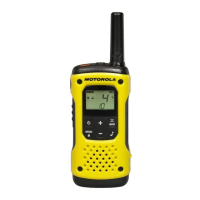
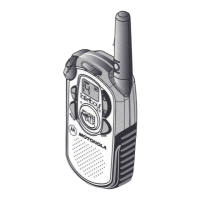
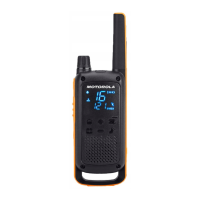
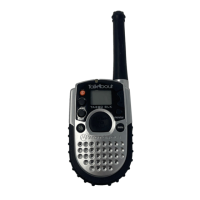


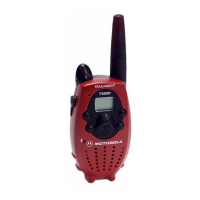
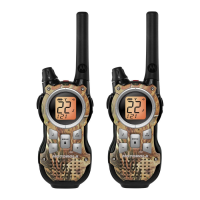
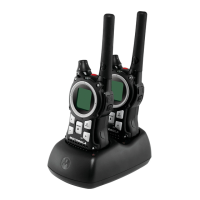
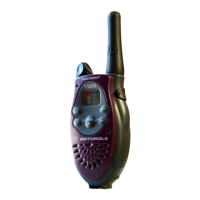
